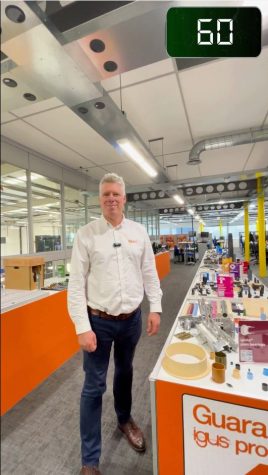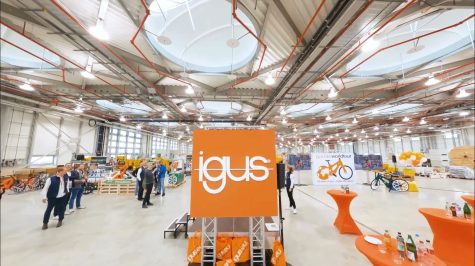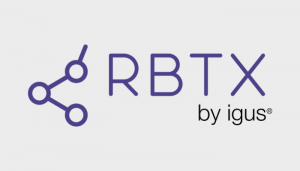For more information visit igus.co.uk/dryves.
What are the different types of electric motors?
igus® provide a variety of motors:
- EC/BLDC motors
- DC (direct current) motors
- Stepper motors
These are designed for a variety of purposes that allow entire handling systems to be configured.
How to test an electric motor
You can apply voltage to the motor to see if it spins freely, checking for abnormal noises, and ensuring it operates within specifications. Contact our experts for more information.
What is a D1?
A drylin® dryve D1 is a motor controller (for BLDC, EC, stepper, and DC motors), designed by igus to solve issues such as long commissioning times and communication troubles. With its quick and easy setup and without needing a programme or app to configure, just a web browser, alongside its popular CANopen and Modbus TCP protocols it is an obvious choice for many applications.
What is a D3?
A drylin® dryve D3 is a motor controller (for DC motors), designed by igus® for solving issues such as long commissioning times and over-engineered solutions. The D3 does not need any software or programming knowledge to setup, it is ideal for simple instructions at variable speeds.
How is a dryve tested?
The D1 and D3 dryves were developed and are tested at the igus® headquarters in Cologne, Germany. Testing is continuously applied with current and prospective applications which, since the development of dryve, maintains the constant examination of the functions and capacities of the D1 and D3 dryves.
At igus® UK, we also test each dryve and hold many in stock for demos with customers and further testing. Our customers use D1 and D3 for a wide range of different applications which helps us to further examine our dryves and build on our training and support of these products. Moreover, with users stretching across the length and breadth of the UK, igus® is able to monitor use of its dryves in many different industries.
In addition, by sharing information across our subsidiaries, igus is able to identify and iron out any issues faced by our customers, such as downloading updates, commissioning the dryves, or simply amending data sheets for these products ourselves.
You can even test it for yourself online via this link.
Where is the dryve D1 used?
The dryve D1 is being used in many different industries, and we continue to hear from new customers with novel applications for these neat little motor controllers.
Some examples of D1 applications are:
- applying film to smartphone screens
- labelling and marking of pharmaceuticals from a conveyor belt
- adjustable door cleaning service
- priming for installing car headlights
- supermarket tray stacking
- machine tool guard operation
Every application is unique, and with some expert help from our engineers and some investigation into the best solution for a problem we will find the right motor controller for your application.
Get in touch with the Low Cost Automation Product Manager, Adam Sanjurgo, asanjurgo@igus.co.uk find out more.
Where is the dryve D3 used?
The dryve D3 is being used in many different industries, and we continue to hear from new customers with novel applications for these neat, little motor controllers.
Some examples of D3 applications include:
- remote setting and fine adjustment on a roof tile manufacturer’s guide wheel – on the production line
- raising and lowering of a screen: in a theatre or sports stadium
- acid spraying in a medical application
- adjustment of a scrap run-off machine
- catenary setting gauge
Every application is unique, and with some expert help from our engineers and some investigation into the best solution for a problem we will find the right motor controller for your application.
Get in touch with the Low Cost Automation Product Manager, Adam Sanjurgo, asanjurgo@igus.co.uk find out more.
What power supply does the D1 need?
The logic voltage supply is 12-24V and the load voltage supply is 12-48V.
What power supply does the D3 need?
24V / 2.5A
What software do I need to use the D1 and D3?
Neither require software!
What is igus® dryve?
igus® produces two motor control systems, which are suitable for DC motor types and diverse applications. You can read more about this below.
D1 dryve
The drylin® D1 dryve is designed for direct control of stepper, DC and EC/BLDC motors and on single axes such as linear belt drives or single lead screw drives. If several D1 dryves are connected via a higher-level control system (PLC, industrial PC, etc.), it can also be used in multi-axis systems such as delta robots or linear robots.
D3 dryve
The drylin® D3 dryve is designed for direct control of DC motors on single axes, such as belt drives or lead screws for simple, linear movements at different speeds and from different starting positions.
What is the difference between the D1 dryve and the D3 dryve and where are they used?
The drylin® D1 dryve is a motor control system (for EC/BLDC, EC, stepper and DC motors) that was developed to offer a universal motor control system for all igus linear systems. The usual long commissioning times of motor control systems can be reduced to a minimum by reducing the settings to the minimum necessary.
The D1 dryve can be used in simple automation applications as well as complex industrial plants
The drylin® D3 dryve is a motor control system (for DC motors), which was developed to offer needs-based solutions for the simplest automation tasks and at the same time reduce the usual long commissioning times to a minimum.
Which motor can I control with the D1 dryve or D3 dryve?
- D1 dryve: all igus stepper, DC and EC/BLDC motors as well as motors in similar performance classes from other manufacturers.
Both in controlled operation, with and without position monitoring, and in closed loop operation (comparable to a servo motor). - D3 dryve: all igus DC motors as well as DC motors from other manufacturers (max. 2.5A continuous motor current)
Which power supply do I need for the D1 dryve or D3 dryve?
- D1 dryve: the logic voltage supply is 12-24V and the load voltage supply 12-48V.
- D3 dryve: 24V/2.5A
Which software do I need for the D1 dryve or D3 dryve?
None!
The D1 dryve has a built-in web server for configuration. By entering the IP address shown on the display of the D1 in a browser of your choice, you can directly access all necessary settings.
With the D3 dryve, the few necessary adjustments can be made using small switches such as rotary knobs on the housing.
What is required for commissioning the D1 dryve or D3 dryve?
- D1 dryve: a power supply (12 to 24V) and a PC including Ethernet interface (and cable) are required.
- D3 dryve: connect a 24V power supply and a motor and you are ready to go. No complicated software installation or complex wiring of various additional switches and sensors.
Do I need basic knowledge of electrical engineering to operate the D3 dryve motor control system?
The intuitively operated rotary elements allow you to set the speed and force limit of the connected motor without prior knowledge.
D3 dryve: how do I move the motor after it has been electrically connected?
A travel movement can be started by means of the two buttons at the front of the D3 dryve and 2 external potential-free switches.
Can my automated system communicate with the D1 dryve?
With standardised communication protocols such as CANopen or Modbus TCP as gateway, it is easy to connect the system to industrial controllers such as Siemens or Beckhoff. The digital inputs and outputs enable extremely easy communication with industrial controllers but also with low-price open-source modules such as Arduino or Raspberry Pi.





